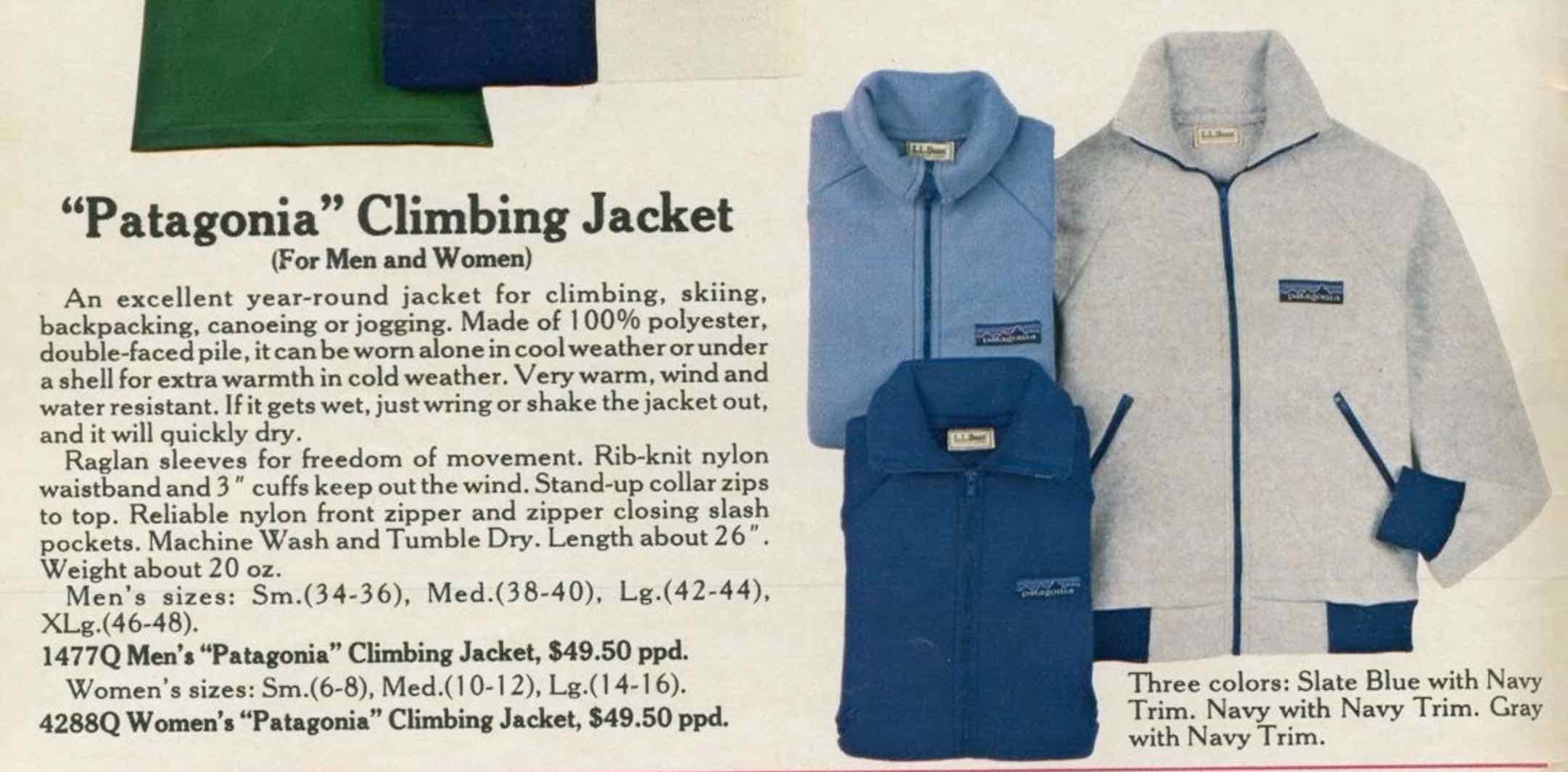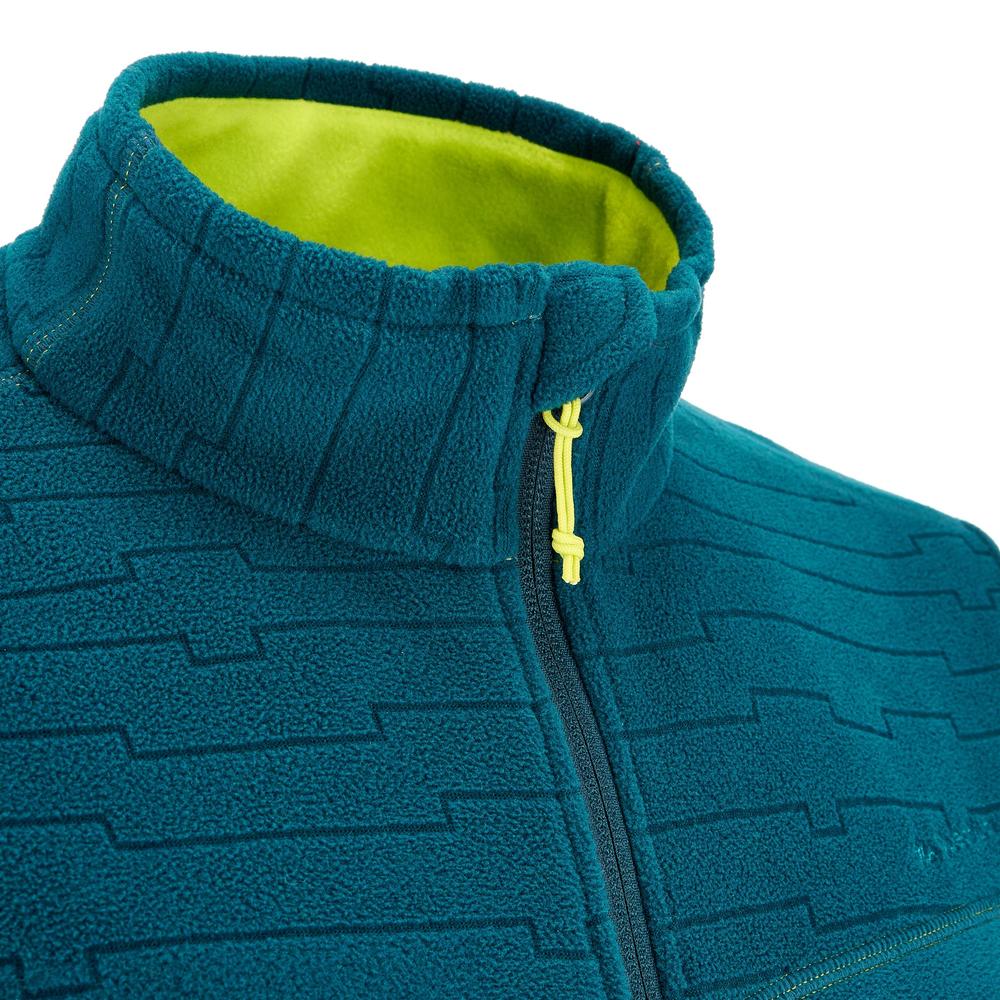A brief history of fleece

Every winter when I’m putting together a piece on recommended gear, a pair of fleece invariably slips into the mix. While I am a little obsessed with Merino wool (Ed: Didn’t I see you caressing merino wool T-shirts last month at Decathlon?). Fleece is merino wool’s beer-drinking, hard-hitting, blue-collared cousin with an interesting backstory.
The decade is the 1970s and Malden Mills began experimenting with polyester fleece, which was the basis on which all modern fleece was created. Malden Mills was previously known for producing faux fur and wool garments, and the company wanted to replicate the insulating nature of these fabrics without the issues that come with natural wool. Under the direction of the mill’s owner, Aaron Feuerstein, a team of engineers wound the superfine polyester yarn into a dense fabric resembling terry cloth, only lighter. After its fibres were brushed, the fabric’s volume greatly increased; they also provided insulation and could wick water away (NY Times).
In 1981 Malden Mills partnered with Yvon Chouinard , owner of a little-known mountaineering clothing company – Patagonia, together debuting Synchilla fleece – a strong, pile fabric made to imitate wool. Within a decade, fleece had become an inescapable element of daily life. And just as the fabric’s lightness appealed to sportsmen, its colourfulness, lack of fur and relative inexpensiveness made it, in a word, trendy.
Malden Mills CEO Aaron Feuerstein intentionally declined to patent this material, allowing the material to be produced cheaply and widely by many vendors , leading to the material’s quick and wide acceptance. The rest, as they say, is history.
As Aaron Feuerstein walked down the hallway of his rebuilt textile mill in Lawrence, Mass. last year, a worker knelt and kissed his hand. Feuerstein didn’t flinch. After his privately owned Malden Mills burned to the ground in late 1995, Feuerstein, then 71, dipped into his own pocket to keep 1,700 idle employees on payroll for three months. His benevolence got him a mention in President Clinton’s 1996 State of the Union address. When the $100 million in debt that Malden took on after the fire forced the company into bankruptcy in 2001, the Boston Globe rallied to its defence, calling on the public to continue buying its signature fleece, Polartec. Folks from all over sent checks for $5 to $25, raising $25,000 that Malden used to donate Polartec gear to homeless shelters. - Trial By Fire By Katarzyna Moreno AT FORBES
Fleece today works best a mid-layer or as a soft-shell (more about clothes layering). Pair it with a moisture-wicking base layer and under a windproof jacket and there you have it – the perfect formula for the most versatile outdoor wear.
So what is it that makes fleece so great?
- Lightweight . My recommended fleece mid-layer is only 210 grammes for a size Large.
- Hydrophobic , holding less than 1% of its weight in water. It retains much of its insulating quality even when wet.
- It is machine washable and dries quickly.
- Can be made with recyclable materials like PET bottles. Decathlon claims that each of its mountain fleece recycles around 9 PET bottles.
Disadvantages
- Because it’s hydrophobic, fleece resists soaps and detergents, but not bacteria, making it prone to mountaineers odours .
- Fleece tends to pile over time especially after a wash. Pilling refers to the process of fibres clumping into small “pills,” which reduce its insulating properties and make the garment look worn or shabby.
- Fleece generates a high amount of static electricity , attracting lint, pet hair, and dust. Important to know if you have shaggy hair dogs as I do
- Melts at the whiff of a fire ember, so not the best thing to wear when sitting around a fireplace.
- Non-recyclable raw materials . Non-recycled fleece is made from non-renewable petroleum derivatives. Even if made of recycled materials, fleece relies on the continued production of non-renewable fossil fuels for the raw material.
- Pollution . When fleece goes through the laundry, it generates microplastics that become part of domestic wastewater. Municipal wastewater systems often discharge into rivers and oceans. PET does not biodegrade, and suspended microplastics are easily ingested by marine life, thus entering the food chain. Fibres can also become airborne, directly from clothes dryer vents or wind. Fibres can travel long distances, and migrate to fields where they are ingested by livestock or delivered to the human food supply on produce products.
My (overflowing) hiking gear closet usually has 2 kinds of fleece. A pair of cheap, devil may care fleece that I wear for most non-technical treks. Such treks constitute 80% of my total treks and therefore these fleece see a lot of abuse. In addition to these every-trek fleece, I own a technical fleece for hardcore expeditions that have to work with a harness and the obscene postures that come with climbing SAC 4 & 5 routes. For a casual (non-technical) fleece I prefer one that has the following characteristics :
- High neck
- Half-zip
- Lightweight
- Eco-friendly Design
- Easy on the wallet
In addition to this for a technical fleece, I look for better construction materials and pockets that will not be impeded by my harness.
You may think that all fleece is constructed equal but I wouldn’t agree with you. Fabric-wise there is very little difference between an expensive fleece and its cheaper brethren. Nevertheless, cut, fit, design-features, anti-pilling and build quality do differ substantially between budget and technical brands.
When it comes to recommendations, my goto mid-range fleece has always been by Decathlon , but for a more technical fleece, I’d recommend RAB Power Grid Hoody . Yet, not all fleece is the same therefore, avoid Quipco . Not only is this fleece scratchy and rough but the cut and design is baggy and unsuitable for trekking.
So there you have it, who knew you could write 900 words on something as humble as a fleece. But I hope this has been educational and next time you go winter trek shopping a fleece will be a part of that essential packing list.

